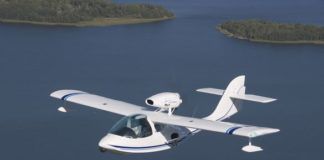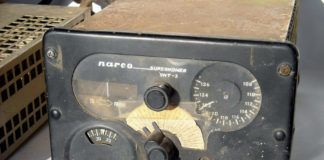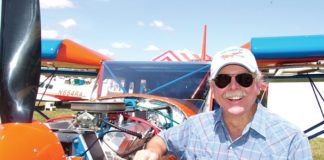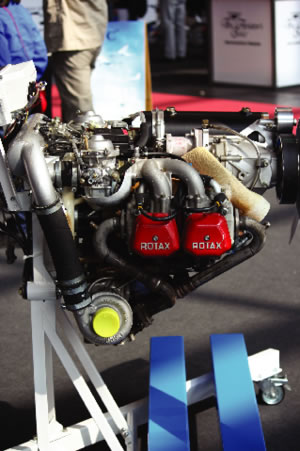
Flight Designs hybrid engine uses a whopping alternator to provide extra thrust for takeoff. It recharges the batteries when the airplane descends at low power from altitude.
The 17th International German trade show, AERO Friedrichshafen, held April 2-5, reported that 625 exhibitors and 46,000 attendees enjoyed the filled 11 exhibit halls with everything from RC models to sailplanes and paraplanes to jets, helicopters and even Zeppelins.
Highlights included adaptations for the Rotax 912/914 line of engines that make them more efficient and even suitable for aerobatic installations. Italian FLYGAS Engineering (www.flygas.info) has one of the more affordable fuel-injection mods for the Rotax 912 series engines. FLYGAS principal Stefano Gamberini explained that his company chose to retain the carbureted system on the Rotax for redundancy and starting purposes, adding another level of safety to the system. His company also produces a bolt-on redundant alternator for the Rotax series that enhances safety. Improving Rotax efficiency must be an Italian passion, as another innovative fuel-injection mod designed to help make the Rotax aerobatic comes from Claudio Alberinazzis EPA Power Group (www.epapower.com). There can be only good to come if Alberinazzis engine runs as smoothly as it is styled.
And So It Goes
Swiss rotary engine manufacturer Mistral (www.mistral-engines.com) announced that one of its 300 series three-rotor, 300-horsepower all-electronic engines is being installed in a Vans RV-10 in Denmark. (This engine had been flying in the U.S. on a Piper Arrow.) The Mistral line promises higher horsepower, low specific fuel consumption, lighter weight, fewer moving parts and longer TBOs than typical horizontally opposed engines. The engines are also capable of burning different types of fuel. The 300 series is in testing for FAA certification, and a manufacturing plant is planned for Deland, Florida. Retail pricing will be about $69,000 complete, the company says.
Mistral was not alone in presenting a rotary solution. It seemed as if each country represented at AERO (and there were more than a dozen) had at least one engine or engine mod to present. Its exciting to see so many different engines, as well as smaller electric and turbine companies all sharing space at one event.
More Volts, Scotty
Flight Design GmbH (www.flightdesign.com), maker of the popular CTS Light Sport Aircraft, made a big splash by unveiling its Rotax 914-based proof of concept hybrid electric-gas engine. Developed by aerospace engineer Oliver Reinhardt, now technical manager at Flight Design GmbH, the 914 wears a 40-hp electric engine where the alternator and starter once were.
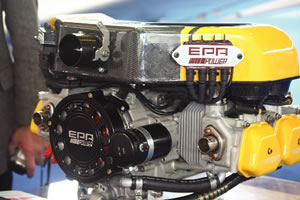
Fuel injection for the 912 should improve efficiency. This is the EPA Power Groups installation.
The windings are of standard materials and size, Reinhardt says, to enhance affordability. It needs no standard aircraft battery, because the motor stores energy through its regenerative drive and lithium-ion batteries, which are recharged when the engine is pulled from climb to cruise power. How powerful is it? We expect this engine to replace the O-360 line, and generate 155 hp on takeoff with a constant-speed propeller, says Reinhardt. The engine, you see, is truly two engines, and that is great because you have safety in redundancy.
He would like to see Flight Design license the engine to fly in many different aircraft, or perhaps even sell it to a company that might be perfectly suited to develop all of its potential markets. For now, though, he is content to say that the test-stand runs are proving promising, and the hope is that the engine will fly by autumn this year.


